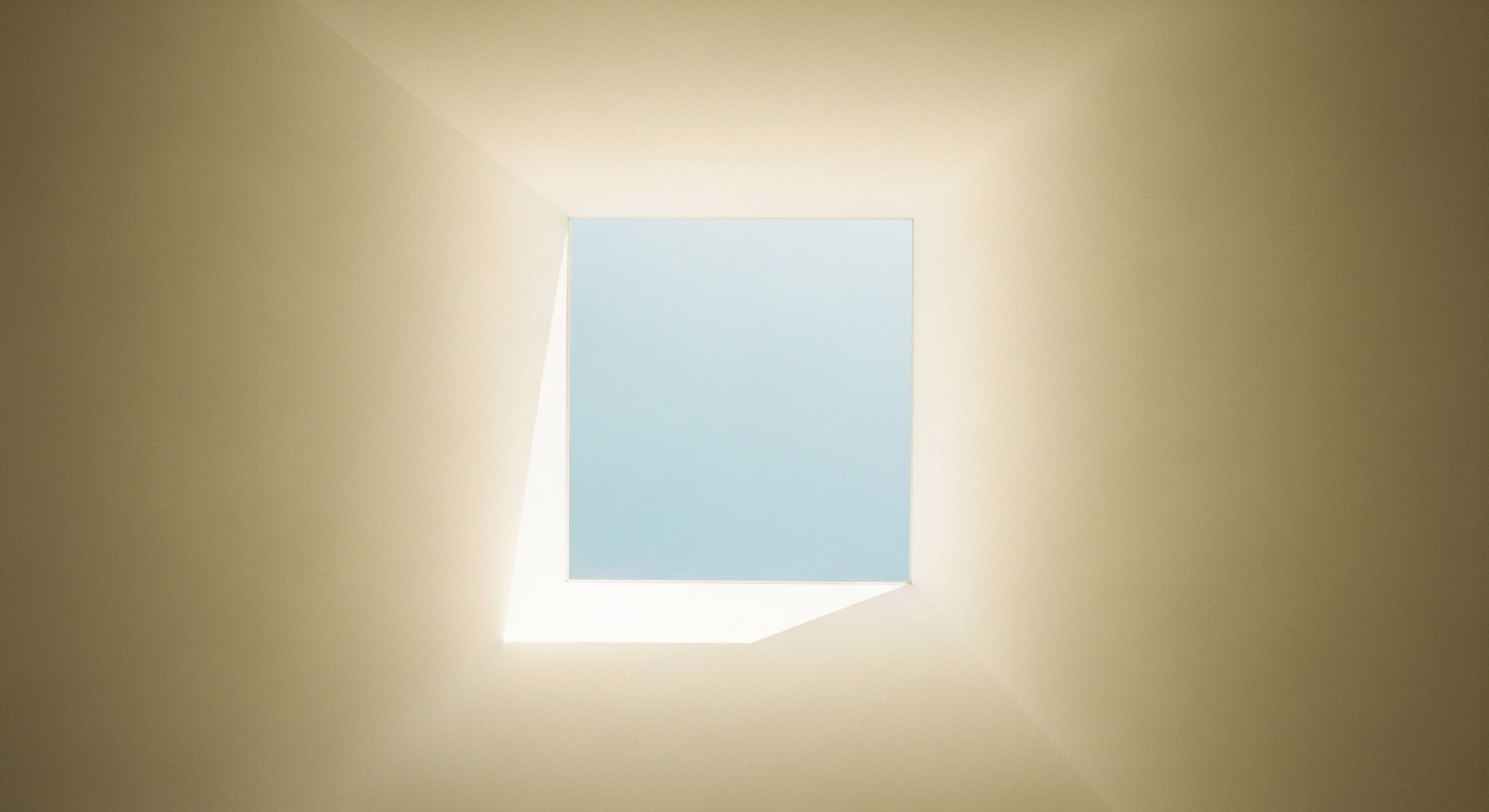

Your Internal Clock Is Your Superpower
You feel it. A subtle drag pulling at the edges of your day, a cognitive friction that separates you from your sharpest self. That feeling of running on a slightly miscalibrated operating system is a performance blocker. Your ambition is there, yet the raw, clean energy required to execute feels just out of reach. This is the silent signal of a system desynchronized from its most potent, natural driver.
We have been conditioned to search for complex solutions, to look for the next supplement or biohack that promises to restore our edge. The architecture of your vitality, however, is built on a far more fundamental principle. It begins every single day with the flip of a biological switch, a master input that calibrates your entire hormonal and cognitive cascade for peak output. This is not a wellness trend; it is a non-negotiable biological command.
Morning light exposure is the single most effective protocol for synchronizing your biology for daytime performance and nighttime recovery.
Accessing this state of heightened alertness and drive is not about adding another layer of complexity to your routine. It is about stripping things back to the essential. Your body is engineered to respond to one primary external cue above all others. Activating this system correctly is the first, most critical step in taking deliberate control of your energy, your mood, and your metabolic health. It is the foundational layer upon which all other performance optimization is built.


The Light Activated System Reboot
Think of your biology as a precision-engineered machine that begins each day in standby mode. Morning sunlight Meaning ∞ Morning sunlight refers to the specific spectrum of visible light, particularly blue light, and its intensity experienced during the early hours following sunrise. is the command line that initiates the master boot-up sequence, signaling every cell and system to come online for active duty. This is a direct, physiological process that recalibrates your internal 24-hour clock, or circadian rhythm. Light entering your eyes is the trigger for a profound hormonal gear shift.
The moment that first dose of photons hits your retinal ganglion cells, a signal is sent directly to the suprachiasmatic nucleus Meaning ∞ The Suprachiasmatic Nucleus, often abbreviated as SCN, represents the primary endogenous pacemaker located within the hypothalamus of the brain, responsible for generating and regulating circadian rhythms in mammals. in your brain ∞ the master clock. This initiates two critical events. First, it triggers the timely release of cortisol, a stimulating hormone that generates alertness and focus.
This healthy morning spike is essential for shutting down sleepiness and bringing your brain to full operational capacity. Second, this same light signal actively suppresses the production of melatonin, the hormone of darkness and sleep, ensuring it stays out of your system during the day.
This daily calibration dictates the rhythm for the rest of your day and the quality of the following night. It sets in motion the downstream release of other key chemicals, including serotonin, which elevates mood and provides the raw material for melatonin production later in the evening. Getting this morning sequence right is the key to unlocking a powerful, natural performance-enhancement cascade.
- The Trigger ∞ Direct photons of natural light entering the eye within the first 60 minutes of waking.
- The Signal ∞ Your optic nerve communicates directly with the body’s central clock, initiating a system-wide update.
- The Primary Response ∞ Production of the sleep hormone melatonin is halted.
- The Secondary Response ∞ A healthy spike in the alertness hormone cortisol is activated.
- The Downstream Effect ∞ Mood-regulating serotonin is released, and your body is primed for optimal sleep later that night.


Executing the Daily Protocol
The application of this principle is brutally simple and requires no special equipment. The key is consistency and timing. The protocol is designed to be executed as soon as possible after you wake up, ideally within the first 30 to 60 minutes. This window is the point of maximum leverage for setting your body’s clock for the entire day. Waiting longer dilutes the signal and weakens the response.
You will begin to notice the immediate effects within the first few days. The initial change is a distinct feeling of alertness and mental clarity that feels cleaner than a caffeine buzz. It is the sensation of your brain coming fully online, faster. Over the course of one to two weeks, the benefits compound.
Your energy levels in the afternoon will stabilize, and you will find it easier to fall asleep at night. This is the evidence of a successfully recalibrated circadian rhythm.
People who receive most of their bright light exposure before noon weigh less on average and score higher on cognitive tests.
The protocol itself is straightforward. You must get outside. Viewing light through a window or windshield is insufficient, as glass filters out the specific wavelengths of light that trigger the strongest response. Do not wear sunglasses or blue-light blocking glasses during this time. Your goal is to let the full spectrum of natural light reach your eyes. You do not need to stare directly at the sun; simply facing in its direction is enough.
Aim for 5-10 minutes on a clear, sunny day. On a day with heavy cloud cover, extend the duration to 15-30 minutes, as clouds can block a significant portion of the light. This small, consistent investment of time pays disproportionate dividends in mental performance, metabolic health, and sleep quality.

Your Biology Is Waiting for Your Command
You possess the ability to architect a better version of yourself every single morning. The machinery is already in place, waiting for the correct input to run its most powerful programs. Taking control of your light exposure is the most foundational act of personal optimization. It is the decision to stop being a passenger in your own biology and to start being the operator. What other built-in systems are you ready to master?




